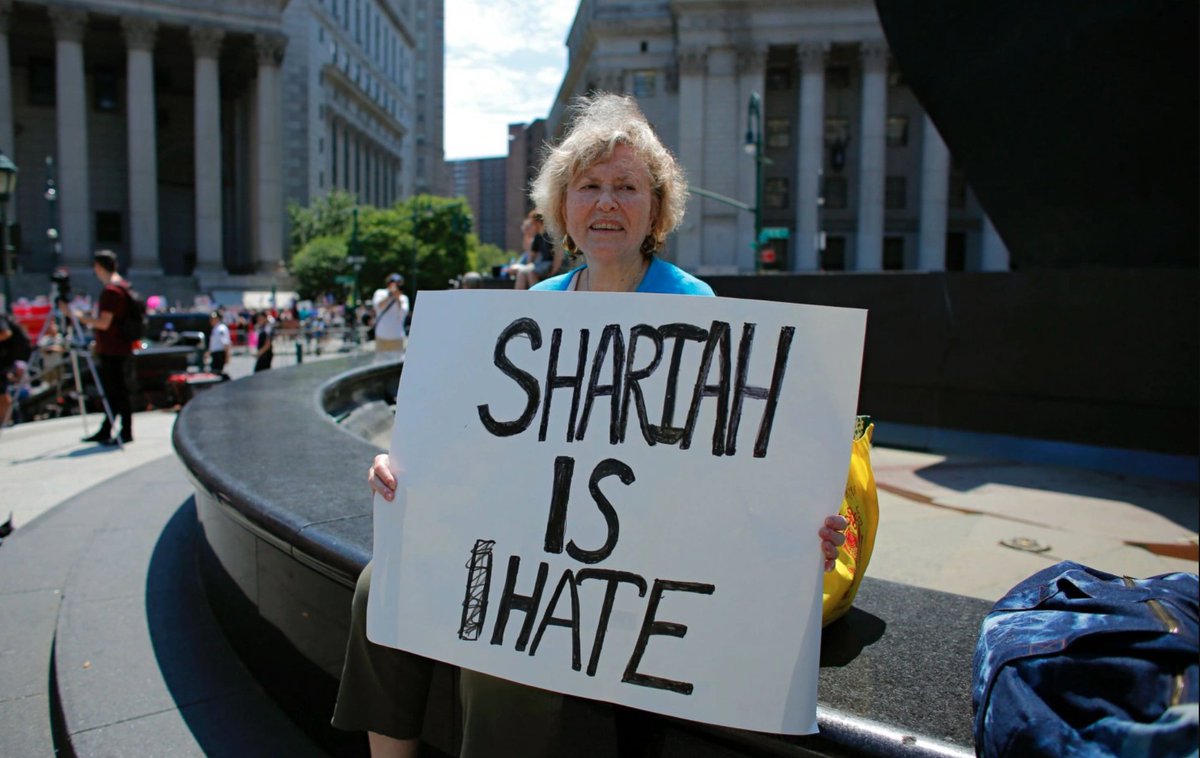
Time flies! We wrapped up my #IntroToIslamGU course this week (well, except for their final research papers...). It was such a pleasure to teach this wonderful group of students—and to learn from them, too. Here's what we've been up to over the last month or so (thread): 

During our week on “hot topics,” we first looked shari’a, commonly known as Islamic law. We discussed what it is and common misconceptions about it in the US. To prep, we listened to @OttomanHistory podcast's episode on it and watched a talk by @AQuraishiLandes. 



A main takeaway was that shari’a is not a single, fixed legal code, but is Muslims’ endeavors to discern and implement God’s will. Fun fact: Arabic-speaking Christians and Jews have used the word shari'a, too, to refer to divine law. 

The second “hot topic” we explored was Sunni-Shi’a relations—theological similarities & differences, as well as historical issues of religious authority & contemporary geopolitics. My friend Mahdi Mohammadpour Shahkolahi of @MizanInstitute kindly was our guest speaker.
I'd already tried to weave in both Sunni and Shi’a perspectives/sources throughout the course, but the students wanted more, so I added in this lesson mid-semester. We also read this piece: vox.com/2016/1/5/10718…
The next unit was called “Journeying Together.” On day one we focused on pilgrimage, looking at the story of Hagar in relation to the hajj in Mecca and the story of Hussein in relation to the lesser known Arbaeen walk and commemoration of Ashura. 

It was important to me that in the class we didn’t just talk about Islamic ideas, institutions, and practices, but also that students became familiar with the stories/narratives that are dear to Muslims’ hearts. 



For hajj/Hagar, we read @islamoyankee's chapter in @EdwardECurtisIV's book, watched a number of videos to get a taste of the rites and sites, and we read this piece by @ostadjaan: onbeing.org/blog/the-seeki…
One of my students was able to go on umrah (the lesser pilgrimage to Mecca) over Thanksgiving break, and she brought back dates and Zamzam water for us! 

For Hussein/Ashura, we read a chapter by @MM_Knight also in @EdwardECurtisIV's book. We also looked at images of the Arbaeen walk in Iraq—the largest annual pilgrimage in the world. 

Our second lesson in the “Journeying Together” unit focused on interreligious relations. My students wanted more theology (woot woot!) so we read about Muslim views of Jesus and Muslim views on the possibility of salvation of non-Muslims.
(I was pleasantly surprised that our classes on heady theological stuff were some of the students’ favorites. Most of these students don’t identify as religious, but that doesn’t mean they aren’t intensely interested.)
We read the chapter on Jesus in @ymirza3131 and John Kaltner’s book. Highly recommend it. amazon.com/Bible-Quran-Bi…
We also read the intro and conclusion to Mohammad Hassan Khalil's book, Islam and the Fate of Others. Students were surprised to learn that many religious people (Muslims, Christians, and others) believe that those who don’t share their faith can be saved. amazon.com/Islam-Fate-Oth…
IMO, their ignorance of this demonstrates a failure on the part of many religious leaders today. I also didn’t learn this til college, and I’m not sure I would have stayed Catholic were it not for Vatican II’s teaching on the possibility of salvation for those outside the Church.
Then we had a week on Islamophobia. We discussed its history, contemporary manifestations, and ways to address it. They read part of my book #Islamophobia_WhatChristiansShould Know.
Throughout the semester, the students also read the novel #TheLover about Muslims in 10th century Baghdad. It focuses on a female Sufi named Zaytuna, and is the first in a series of murder mysteries by @waraqamusa. I highly recommend the book as a holiday gift.
The students also attended a Friday prayer service in Georgetown’s gorgeous new mosque and wrote a reflection paper on the experience. This photo is from our class visit with @HendiImam in October. 

We finished w/ presentations on student research projects. They tackled a range of topics: Muslims in the Civil War, Sufi music, Malcolm X, Islamophobia in counterterrorism efforts, conversion of Muslim refugees to Xianity, the Qur’an’s Adam and Eve story, issues of gender + more
It was a great semester. Thanks to everyone who followed along and to my awesome students. #IntroToIslamGU
• • •
Missing some Tweet in this thread? You can try to
force a refresh










